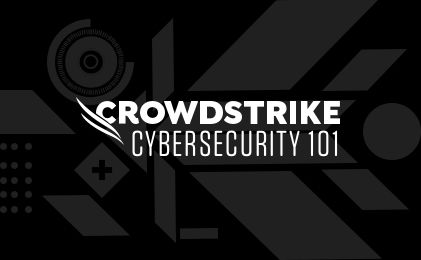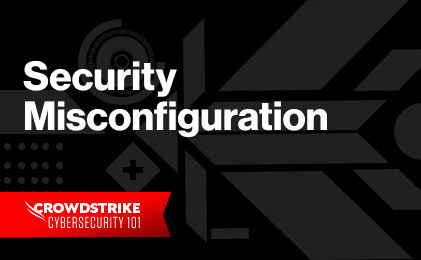What are SaaS misconfigurations?
SaaS (Software as a Service) misconfigurations refer to the incorrect or insecure configurations of SaaS applications and services. These misconfigurations can expose sensitive data, compromise security, and lead to various vulnerabilities that attackers can exploit.

The Ultimate SaaS Security Checklist: Future-Proof Your SaaS Security
Download this guide and don’t miss out on the 2025 Ultimate SaaS Security Checklist, highlighting critical features to evaluate.
Download SaaS Security ChecklistWhy are SaaS misconfigurations a security risk?
Improper configurations in SaaS platforms can result in several security risks, including:
Unauthorized data exposure
Unintended access permissions
Non-compliance with industry standards
Potential breaches
Harm to organizational reputation
Unauthorized data exposure
Misconfigurations can result in the exposure of sensitive data stored within the SaaS application. Whether it’s personally identifiable information, financial records, or trade secrets, unauthorized access to data can lead to severe consequences such as data breaches, identity theft, financial losses, and damage to an organization’s reputation.
Unintended access permissions
SaaS misconfigurations can grant unauthorized individuals access to the SaaS application or its associated resources. This unauthorized access can lead to data manipulation, unauthorized account creation, or privilege escalation within the system. Exploiting these vulnerabilities, attackers can compromise the integrity and security of the entire SaaS environment, impacting both the organization and its users.
Compliance violations
Compliance violations are another potential consequence if SaaS misconfigurations are not remediated. Organizations must adhere to industry regulations and data protection standards, and misconfigurations that lead to data breaches or non-compliance can have legal ramifications, financial penalties, and reputational damage.
Security breaches
SaaS misconfigurations can create security vulnerabilities that attackers can exploit. Publicly exposed APIs, weak authentication mechanisms, or insecure integrations can serve as entry points for various attacks, including injection attacks, cross-site scripting, or privilege escalation. Exploiting these vulnerabilities can compromise the SaaS environment and potentially affect other connected systems.
Reputational damage
Ultimately, SaaS misconfigurations can lead to reputational damage for a company. Customer trust is crucial for successful businesses, and misconfigurations that result in data breaches or security incidents can severely damage that trust. Customers may lose confidence in a company’s ability to protect their data, potentially leading to financial losses and a decline in business.
Top 4 SaaS misconfigurations to avoid
Misconfigurations in SaaS environments can lead to data exposure, unauthorized access, and compliance risks. Below are four common SaaS misconfigurations that organizations should proactively address:
- Lack of multi-factor authentication (MFA): Without MFA, accounts relying solely on passwords are highly vulnerable to credential-based attacks. Enforcing MFA across all critical SaaS applications significantly reduces the risk of unauthorized access.
- Excessive permissions & access controls: Granting users more privileges than necessary increases the risk of data breaches and insider threats. Implementing the principle of least privilege (PoLP) ensures users only have access to the resources they need.
- Weak API security: Exposed or unprotected APIs allow attackers to manipulate SaaS applications and exfiltrate sensitive data. Organizations should enforce strong authentication, rate limiting, and encryption to secure APIs.
- Publicly exposed data & file sharing misconfigurations: Improperly configured file-sharing settings can expose sensitive business data to the public or unauthorized users. Organizations must routinely audit file permissions and restrict access to confidential documents.
By addressing these misconfigurations, organizations can significantly strengthen their SaaS security posture and minimize the risk of data leaks and unauthorized access.
The challenges for securing misconfigurations
Securing misconfigurations presents several challenges, including:
Complexity
The multifaceted nature of SaaS ecosystems, with their numerous settings and integrations, makes it difficult to consistently maintain optimal security configurations.
The complexity increases as the scale of the SaaS environment grows, making it difficult to keep track of all configurations across different services. To add to this complexity, every app has its own language and terms, meaning security teams need to be experts in every app in order to properly secure it.
Lack of visibility
Misconfigurations can go unnoticed when security teams lack access and visibility to configuration settings. Organizations may not have adequate tools or processes in place to effectively monitor and track configurations, making it harder to identify and remediate misconfigurations in a timely manner.
Rapidly changing environment
SaaS environments are dynamic, with frequent updates, patches, and changes to configurations. This continuous evolution can make it challenging to maintain proper security configurations consistently. The introduction of new features or changes to existing ones may inadvertently introduce new misconfigurations, especially if security considerations are not thoroughly evaluated.
Volume of configurations
When considering the scale of an enterprise, it becomes evident that there are numerous SaaS applications in use, ranging from hundreds to thousands. Each of these applications possesses a multitude of global settings, encompassing various aspects such as file sharing permissions, mandatory multi-factor authentication (MFA), video conferencing recording permissions, and more. When factoring in the employee count, which can range from thousands to tens or even hundreds of thousands, the complexity of managing and securing these configurations becomes apparent.
The security teams responsible for safeguarding the organization must acquaint themselves with the unique rules and configurations of each application, ensuring their compliance with company policies. However, with hundreds of different application setups and tens of thousands of user roles and privileges, this task quickly becomes unsustainable.
Additionally, the challenge is compounded by the presence of SaaS-to-SaaS applications that are integrated into the organization’s ecosystem without the knowledge or involvement of the security team. This lack of visibility and control adds another layer of complexity to securing the enterprise’s SaaS environment.
Best practices for preventing SaaS misconfigurations
Preventing SaaS misconfigurations requires a proactive approach to security, continuous monitoring, and adherence to best practices. Below are key strategies organizations should implement to secure their SaaS environments:
- Enable multi-factor authentication (MFA) for all users: Require MFA for all accounts, especially those with administrative privileges, to prevent unauthorized access due to compromised credentials. MFA adds an extra layer of security, reducing the risk of credential-based attacks.
- Conduct regular configuration audits: Regularly audit and verify the security settings of SaaS applications to identify and rectify misconfigurations promptly. Utilizing automated tools can assist in detecting potential risks before they result in data breaches.
- Enforce least privilege access controls: Restrict user access to only the necessary resources based on their role. Implementing role-based access control (RBAC) and regularly reviewing permissions prevents unauthorized access and privilege escalation.
- Strengthen API security: Secure APIs by enforcing authentication and authorization controls, limiting data exposure, and monitoring API activity. Using OAuth, API gateways, and encryption helps protect against unauthorized access and data breaches.
By implementing these best practices, organizations can significantly reduce security risks associated with SaaS misconfigurations, ensuring better compliance, data protection, and operational resilience.

CrowdStrike Falcon® Shield Solution Brief
Download this Falcon Shield solution brief to learn how this SSPM solution allows you to make the most of your SaaS security controls.
Download Falcon Shield Solution BriefSecuring SaaS environments with Falcon Shield
Addressing SaaS misconfigurations is essential for maintaining a strong security posture and protecting sensitive data from unauthorized access. By implementing proactive security measures, organizations can minimize risk, enforce compliance, and prevent costly breaches. However, as SaaS ecosystems grow more complex, businesses need advanced solutions to continuously detect and remediate misconfigurations.
CrowdStrike Falcon® Shield provides comprehensive SaaS security posture management (SSPM) by identifying misconfigurations, enforcing best practices, and automating security policy enforcement across cloud applications. With Falcon Shield, organizations can gain real-time visibility, prevent configuration drift, and ensure their SaaS environments remain secure against evolving threats.







